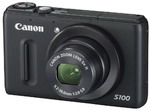Wednesday, March 24, 2004
Digital Photography Workflow: This is My Process - What's Yours?
Posted by Jason Dunn in "THOUGHT" @ 10:00 AM
Step 1: Move Photos Over
Put memory card into the PC/laptop memory card slot, then copy all the photos over to the desktop. I do this because I've found that it takes too long to view/rotate images when they're on the memory card, even with a USB 2.0 reader. My computer desktop is an "active zone" - I put things there that I'm actively working on, and because the folders are in front of me every day, it's more effective for me than a task list.
Step 2: Delete The Junk, Rotate
Now that the images are copied over, I'll start to go over them using ACDSEE 6.0 (configured for full-screen viewing) and delete the images I don't want to keep. I tend to be fairly harsh with my deletions, really trying to keep only one photo of each scene, and I delete any images that are blurry or over/underexposed (unless it's a great image that I think I can rescue). I'll leave photos that I think can be rescued with a good crop. I will also loslessly rotate images at this point using CONTROL+J in ACDSEE (this means the images are rotated without re-compressing them as JPEGs, which means no loss in quality).
Step 3: Re-naming The Files
Once I've finished trimming down the collection and they're all rotated to the correct orientation, right-click on the folder and select Browse With ACDSEE in order to fire up ACDSEE and have that folder displayed. I'll then use the batch file re-naming program to name my images, typically using the following taxonomy: Event - ##.jpg, where ## represents the image number, starting with 01. I'll start with 001 if I have over 99 images - that's one of the things people often forget with Windows: if you want to see things in filename order, you'll want to make sure you start at 01 and work your way up from there.
Step 3: Delete The Junk, Rotate
Once my files are named correctly, I'll move that folder into My Pictures/XYZ/, where XYZ represents the first level of categorization that I use. I have folders such as Vacation, Family Events, Nature, Photo Art, Christmas, etc. My folder full of photos will go inside one of those sub-folders. In most cases, there's only two levels maximum, so inside each of these folders I'll have dozens of folders, each with photos from a particular event.
Step 4: Fire Up Picasa
Now that my photos are inside the right folder, Picasa can deal with them nicely. I'll go through my photos now, one at a time, and do custom crops to clean up any framing issues, using the red-eye reduction to fix any red-eye issues, and use the enhance button to see if the "one click fix" will make the image better or worse. I'd say 40% of the time Picasa's Enhance button makes the image better, but if I don't like the automated fix, I'll make a mental note to go back and open up that image later in PhotoImpact and do a manual level adjustment. If I want to make prints, I'll use Picasa to crop to whatever size I want, which is usually 4x6 in size. I like the fact that Picasa keeps the original version of the photo in a hidden folder, because it means I can always go back and crop for an 8x10 print if I wanted to.
And that's it - that's my workflow process. I'm sure there are ways I can improve the process - if Picasa's media detector worked better, and if it allowed file renaming, folder creation, full-screen image viewing, and all the other cool stuff ACDSEE 6.0 does, I'd only use one program. ;-) ACDSEE 6.0 has a media detection tool that might speed up my importing process, but I haven't experimented with it enough to know if it will do things the way they need to be done.
What about you? What's your workflow process for digital photography?












